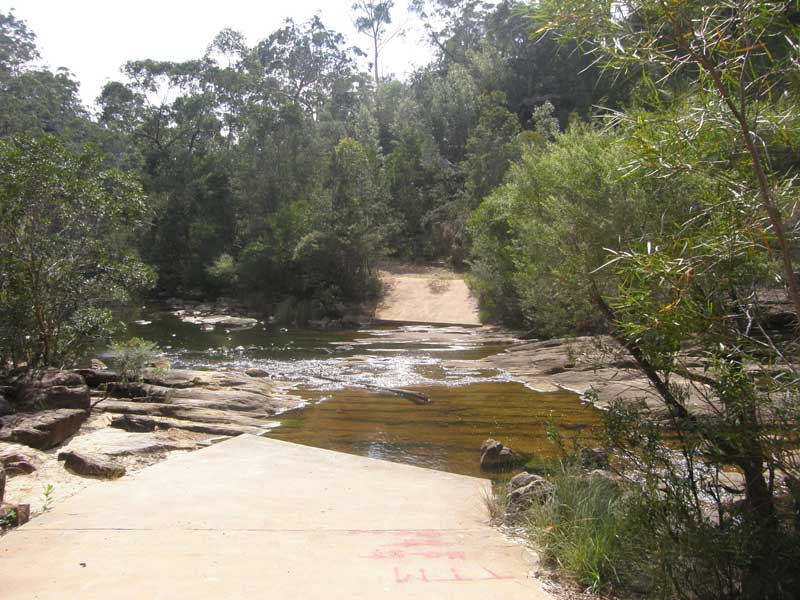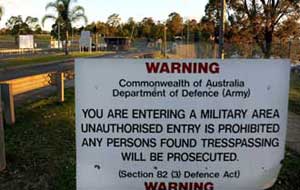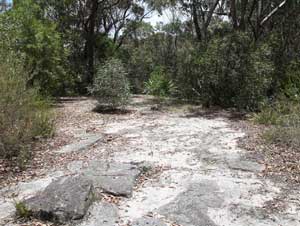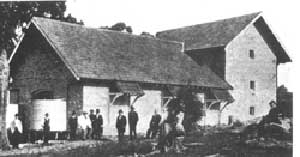
Lost Sydney: Eckersley
Location: Holsworthy, SydneyEuropean settlement in the Holsworthy district occurred in the mid 1790s with the clearing of land for a number of small farms. From 1797 to 1802 there were increasing hostilities between the original inhabitants and the new settlers. Gov. Macquarie visited the district in 1810 and established the adjoining town of Liverpool. Holsworthy appears to have been named after the town in Devon, England where Macquarie married his second wife Elizabeth in 1807.
The area contains some of the colony's important early land grants from 1798 including grants to pioneer settlers Thomas Laycock, Thomas Moore and Captain Thomas Rowley. These farms were crucial to the early food production of the colony and then demonstrated the early industry of the colony including a mill (erected 1822), boatbuilding in the 1830s and major river trade utilising vessels up to 100 tons on the Georges River until the late 1880s when the river silted up and became un-navigable.
Around that time, a township called Eckersley developed within the boundaries of what is now the Holsworthy Field Firing Range. The Parish of Eckersley was opened for settlement under the Crown Lands Act of 1884. It was located between the Woronona and Georges Rivers on the original route from Sydney to Campbelltown, Liverpool and the Illawarra District. Land auctions of lots from 20 to in excess of 370 ha sold quickly and by the early 1890s settlers who moved into the area established a number of vineyards and orchards along the old coach road which lead from Liverpool to Darkes Forest. Twelve families, including the Adams, Etchells, Everett, Frere, Heffernan, Kelso and Trott families, selected land there in the 1880s. The settlers established market gardens and orchards and kept poultry and bees. Their children attended school at East Minto.
Located some 18 km south west of Liverpool on the east side of the Gorges River, Eckersley was bounded by Greenhills Road in the west and Georges River Road in the east with the old coach road (Old Illawarra Road) between them. A bridge over the Georges River, which survived until 1942, was known as Frere's Crossing.

Freres Crossing
The original road into Eckersley is now the road into Holsworthy Army Base. The National Park Road, which still runs through what was once the township of Eckersley, was a 1,200 pound project to boost employment in the 1889 - 1891 period. As the remnants of these roads still exist, a quick look at a modern street directory at the northern end of the Holsworthy Range will quickly identify where Eckersley was.
Polish-born Isaac Himmelhoch, a Sydney financier, took up wine making as a hobby at the turn of this Century. The result of this hobby was a vineyard called Grodno, which was the largest and most successful vineyard at Eckersley. By 1901 his 259 ha selection had 7 ha under Hermitage and Malbec grapes and 6 ha which would receive new vines that season from cuttings planted in 1900. He constructed a large stone cellar and a number of wells and irrigation channels to supply water to his vines. In 1901 the premises included "a new and commodious wine cellar with pressing and fermenting room attached, constructed of stone with tiled roof, the temperature of which rarely exceeds 60 degrees."
In May 1901 the Sydney Mail claimed that few places in NSW were adapted for the production of high class wines like Grodno's. The winery continued successfully until the takeover of the Holsworthy area by the Army for its new military base, at which time it was forced to closed. George Frere, a French winemaker, selected 1280 acres of sandy soiled land at Eckersley and planted grapes. In France it had been discovered that vines growing in sandy soil were resistant to the phylloxera virus.
A number of illegal stills were in existence around the turn of the 20th Century. Frank and Harry Etchells, neighbours of George Frere, were the most successful and notorious. Ironically teetotallers themselves, the Etchell brothers had a rum still concealed under rock ledges not far from Frere's Crossing. Their rum was a colourless liquid; sometimes Frank coloured it with burnt sugar, but often it was sold as clear spirit. The rum was carried in 4-gallon kerosene tins overland to Bulli were it was sold to the coal miners of the Illawarra for 4 pounds a tin. The police often tried to catch them but were never successful. The Eckersley Post Office was opened in September 1891. At that time there were over 100 people registered as living in the settlement. Being a rural community that never had the chance to become part of the Sydney metro area, Eckersley never grew much bigger. It was quite remote and the soil proved to be not as suitable to wine growing and orcharding as first thought.
By October 1911, the post office was downgraded to a receiving centre only due to the fall off in business. A year earlier, Eckersley's fate had been set when Lord Kitchener, on a visit to Australia advising on military matters, went to Liverpool and declared Holsworthy as the site for a permanent Army encampment. Once the Army took possession in 1913, the rural settlement of Eckersley was abandoned and drifted into history. Very little remains of the village today. A dry stone wall is one of the few remnants of the suburb that never was.








